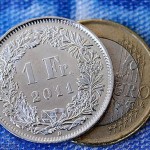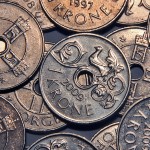Gold and silver prices were higher during midday trade in Europe today, after disappointing US retail sales pressured the dollar lower, while conflicts in the Middle East and Ukraine remain on focus. Meanwhile, copper futures were lower, as below-par Chinese figures concerned investors.
Gold futures for delivery in September on the Comex in New York traded at $1 314.0 per troy ounce at 8:58 GMT today, up 0.26%. Prices ranged from $1 306.0 to $1 315.8 per troy ounce.
Meanwhile, silver for September was up 0.58% at $20.020 per troy ounce. The contract closed Tuesday 0.95% lower.
US retail sales figures were posted today. Overall, sales were unchanged on a monthly basis in July, in comparison with expectations of a 0.2% growth. The readings falling short of forecasts pressured the dollar and eased precious metals.
Since gold, like many other commodities, is mostly traded in dollars, the value of the US currency plays a major role in the metal’s investment appeal, with a stronger dollar lifting the price of gold to foreign currencies and vice versa.
The US Dollar Index, which gauges the strength of the US currency, added 0.04% yesterday. By 12:51 GMT today the index reversed earlier gains to stand 0.13% lower at 81.46, pressured by the lackluster sales.
Retail sales are a key metric for gauging the US economy, as it is a leading indicator for consumer spending, which generates about 80% of US GDP.
Elsewhere, France and Germany, the Eurozone’s two top economies, posted CPI earlier today. German consumer prices rose by 0.3% on a monthly basis in July, and 0.8% annually, while France’s inflation was at -0.3% on a monthly basis. The readings come after the German ZEW posted its surprisingly low reading on economic sentiment yesterday, pressuring the euro to near an eight-month low, and add to pessimistic sentiment for the EU, ahead of Bloc-wide CPI and GDP readings tomorrow.
The euro has a very strong opposite correlation with the US dollar, meaning a weaker euro directly increases the value of the dollar, and the dollar quickly caught up to near an eight-month peak yesterday.
Iraq, Ukraine
Investors continued to monitor developments in the Middle East and Ukraine, as both Iraq and Russia are still facing a quite real possibility of energy export disruption.
Iraq, OPEC’s second-top oil producer, with exports of 2.5m barrels per day, would receive more help, as the country fights against jihadists of the Islamic state, US and Iraqi authorities reported. The US and France have begun supplying Kurdish forces with weaponry, while also aiding fleeing civilians via air drops of food, water and medicine. The UK has also been dropping humanitarian supplies to the ravaged and terrified civilians.
Meanwhile, Iraqi politics are also on the table, with incumbent PM Nouri Maliki refusing to step down, after President Fouad Massoum declined to nominate him for third term, effectively disregarding the constitution. He offered the job to a more consensual figure, the deputy parliament speaker Haider al-Abadi. Maliki deployed forces personally loyal to him in Baghdad on Monday, and vowed to “fix the mistake” of the President, but there have been no reports of violence so far.
Elsewhere, Ukraine is preparing to receive a convoy of Russian humanitarian aid, which caused some concern and controversy earlier. NATO had warned Moscow not to use humanitarian or peacekeeping incentives in order to send troops to Ukraine, while warning that Russia has massed a significant number of combat-ready troops on the border.
The Kremlin insisted on the humanitarian nature of the convoy, and has denied any intention to invade Ukraine or that it supports in any way the pro-Russian separatists in its neighbor.
Russia is subject to increasingly tougher economic sanctions by the West over its involvement with the crisis in Ukraine, which started last year. So far sanctions have failed to disrupt energy exports, but tensions are as high as ever.
“In these past weeks … the market completely put aside or underestimated the growing geopolitical risk, which in fact has been increasing,” Edouard Mouton, head of the quantitative desk at Diapason Commodities Management SA in Lausanne, Switzerland, said for The Wall Street Journal.
Copper
Copper futures for September delivery traded at $3.1330 per pound, down 0.68%. The contract dropped 0.63% on Tuesday.
China, the world’s leading consumer of industrial metals, with a 40% share of total copper demand, posted key economic metrics today. Industrial production was logged to have increased by 9.0% on an annual basis in July, while fixed asset investments and retail sales growths were slightly lower than expected at 17.0% and 12.2% annually, respectively. New loans, however, were reported at only 385 billion yuan in July, less than half of forecasts and a third of Junes, and the lowest level in almost six years.
“Metal prices find themselves under pressure across the board after somewhat weaker economic data were published in China,” Daniel Briesemann, an analyst at Commerzbank AG in Frankfurt, said for Bloomberg. “The Chinese economy has not got off to quite such a buoyant start to the second half of the year.”





